Tag: magnetic effect of current class 10
Notes on Magnetic Effect of Electric Current Class 10 NCERT
Notes on Magnetic Effect of Electric Current Class 10: In Chapter 12 of the Class 10 science curriculum, the main focus lies on magnetic fields and electromagnetic effects. The chapter thoroughly explores the application of the magnetic effect of electric current in both electromagnets and electric motors.
Notes on Magnetic Effect of Electric Current Class 10
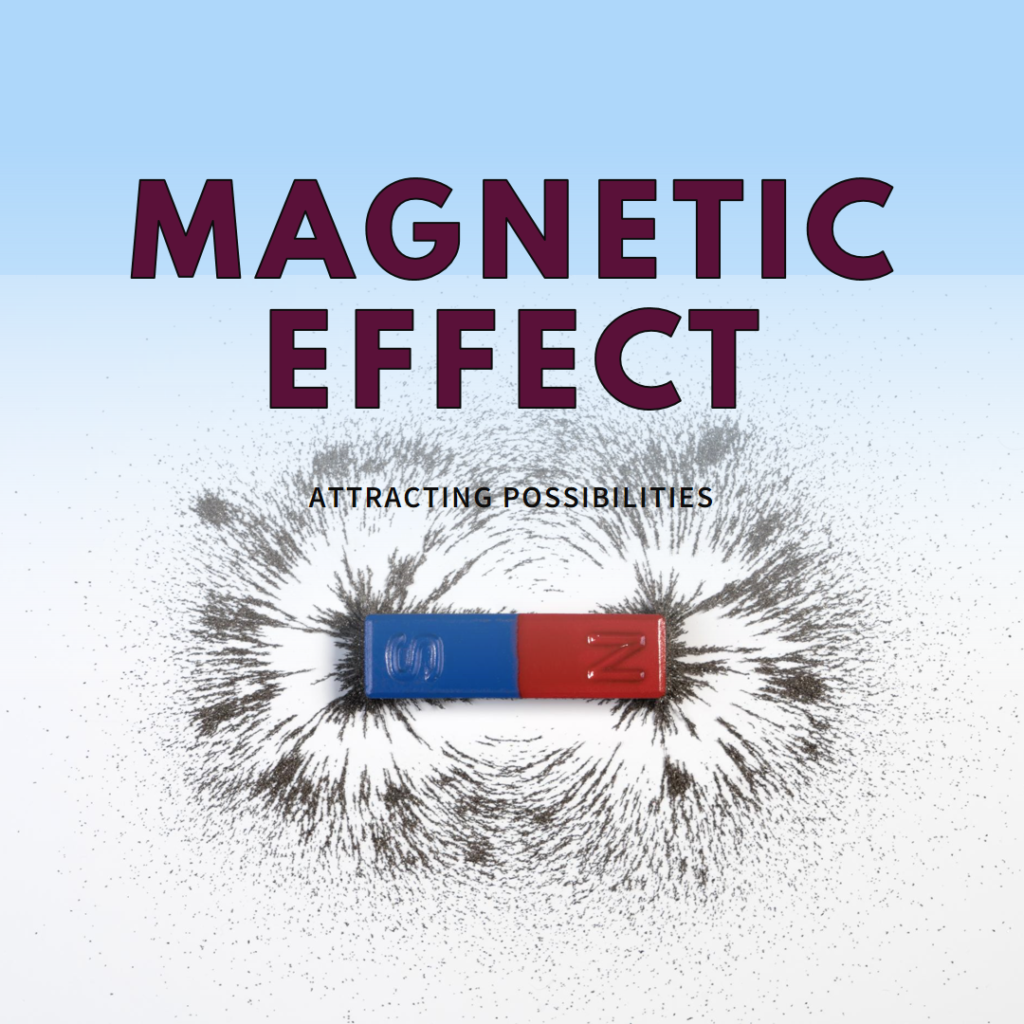
Notes on Magnetic Effect of Electric Current Class 10
Magnet
A magnet refers to a substance capable of generating a magnetic field that can either attract or repel other materials possessing magnetic properties. A natural example of this is lodestone, which possesses magnetic properties and attracts materials like Iron, Nickel, Cobalt, and others.
Every magnet is inherently bipolar, featuring distinct north and south poles that are inseparable. These two poles coexist and cannot be isolated. When a magnet is freely suspended, its north pole is the side that aligns with Earth’s geographic north.
Just like electric charges, magnetic poles also demonstrate attractive and repulsive behavior. Similar poles repel each other, while unlike poles are drawn together.
Bar magnet
A bar magnet is a rectangular object made of iron, steel, or any ferromagnetic material with inherent permanent magnetic characteristics. It possesses distinct north and south poles. When suspended freely, the bar magnet aligns its north pole towards Earth’s geographic north pole.
Magnetic Field
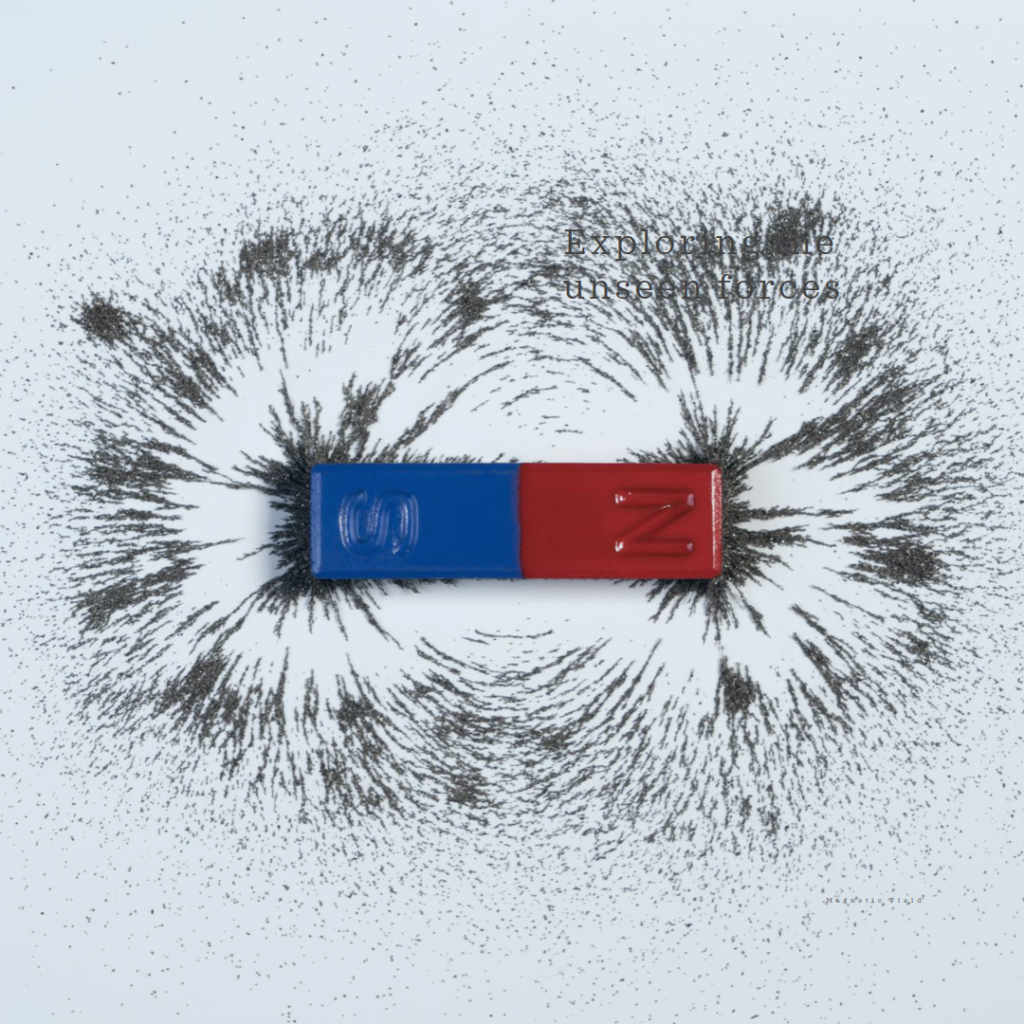
A magnetic field refers to the area surrounding a magnet where its magnetic influence can be observed. The direction and intensity of this magnetic field are depicted through lines of force known as magnetic lines.
Magnetic Field Lines
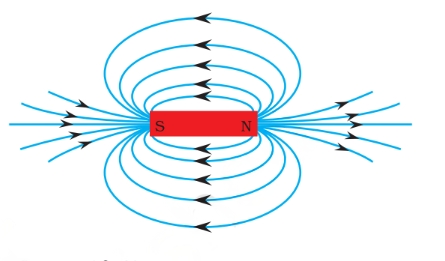
The magnetic field lines of a magnet form continuous and closed loops.
At any given point, the tangent to a field line indicates the direction of the total magnetic field.
The intensity and strength of the magnetic field increase with a greater number of field lines crossing per unit area.
The magnetic field lines do not intersect with each other.
Magnetic Field Lines for a Closed Loop
Due to the dipole nature of magnets, magnetic field lines must have a starting and ending point. As per convention, the field lines originate at the north pole and extend towards the south pole outside the bar magnet, while inside the magnet, they go from south to north.
This configuration results in the formation of closed loops. The strength of the magnetic field is greater where the field lines are closer or denser.
Iron Filings Test around a Bar Magnet
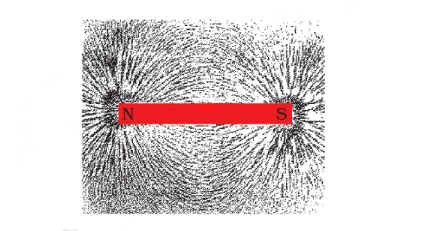
When iron filings are scattered around a bar magnet, they reveal the magnetic field lines that encircle the magnet. These magnetic field lines can be described as imaginary lines that visually depict the magnetic field encompassing any magnetic material.
Magnetic field lines do not intersect because it is not possible to have two different tangential magnetic field directions at the same point. If a compass needle were placed at such a point, it would indicate contradictory directions of the magnetic field, which is logically impossible.
Notes on Magnetic Effect of Electric Current Class 10
Oersted’s Experiment
Passing electric current through a conductor creates a magnetic field encircling it. This phenomenon becomes evident by observing the deflection of a magnetic needle near the conductor. The degree of deflection increases with a higher current flow. Reversing the direction of the current also leads to a reversal in the direction of the deflection shown by the magnetic needle.
Electromagnetism and Electromagnet
An electromagnet is a man-made magnet that generates a magnetic field when electric current flows through a conductor. This magnetic field vanishes when the current is switched off.
The process of creating or inducing a magnetic field through the flow of electric current is known as electromagnetism.
Magnetic Field Due to a Straight Current-Carrying Conductor
When electric current flows through a straight conductor, it generates a magnetic field surrounding it. This phenomenon becomes visible by using iron filings, which align themselves in concentric circles around the conductor.
Right-Hand Thumb Rule: Notes on Magnetic Effect of Electric Current Class 10
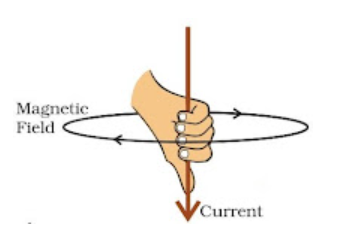
If you hold a straight conductor in your right hand with the thumb pointing in the direction of the current, the tips or curl of your fingers indicate the direction of the magnetic field encircling the conductor.
Magnetic Field Due to Current through a Circular Loop
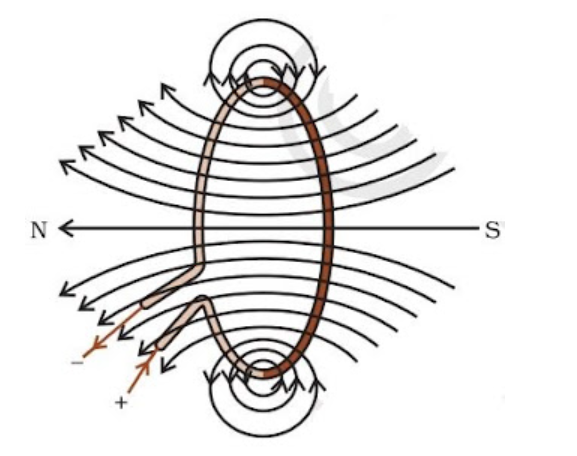
The right-hand thumb rule is applicable to a circular conducting wire as well, as it can be considered a collection of small straight segments. Each point along the wire carrying current generates a magnetic field that appears as straight lines at the center.
Magnetic Field Due to Current in a Solenoid
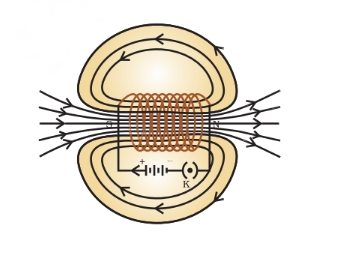
A solenoid is a cylindrical coil composed of numerous circular windings. When electric current passes through it, it exhibits magnetic properties akin to a bar magnet, producing a comparable field pattern. To enhance its magnetic strength, a soft iron core is often employed.
Notes on Magnetic Effect of Electric Current Class 10
Ampere’s Experiment
When an electric conductor is situated within a magnetic field, it encounters a force. The magnitude of this force is directly proportional to the current flowing through the conductor and is also perpendicular to both the length of the conductor and the magnetic field.
The force acting on a straight current-carrying conductor is mutually perpendicular to both the magnetic field and the direction of the current.
Fleming’s Left-Hand Rule
Fleming’s left-hand rule dictates that the direction of the force exerted on a current-carrying wire is perpendicular to both the direction of the current and the magnetic field.

Electric Motor
Through arm AB, current enters via brush X, and through brush Y, current flows from C to D. By applying Fleming’s Left-Hand Rule (LHR), we determine that the force pushes AB downwards and CD upwards.
In an electric motor, the split rings PQ function as a commutator, responsible for reversing the direction of the current periodically. This reversal occurs at each half-rotation, resulting in a continuous rotation of the coil.
Faraday’s Experiment: Notes on Magnetic Effect of Electric Current Class 10
Faraday made a significant discovery that a magnetic field can interact with an electric circuit and induce a voltage, which is referred to as EMF (electromotive force) through electromagnetic induction.
When a magnet is brought closer to a coil, it initiates a current in the coil circuit, which is evident by the deflection observed in the galvanometer needle.
Electromagnetic Induction
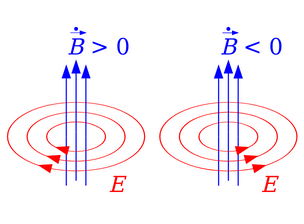
Electromagnetic induction is a phenomenon where an induced EMF and subsequent current are produced in a coil due to a changing magnetic field over time.
When a coil is positioned close to a current-carrying conductor, the magnetic field alters either due to a change in current (I) or due to the relative motion between the coil and conductor. The direction of the induced current is determined using Fleming’s right-hand rule.
Fleming’s Right-Hand Rule
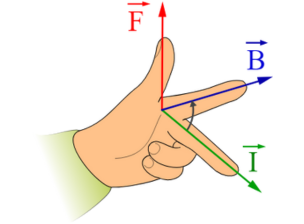
As per Fleming’s right-hand rule, you can use your right hand in the following manner: stretch your thumb, forefinger, and middle finger to be perpendicular to each other.
When the thumb represents the direction of the conductor’s movement, the forefinger points in the direction of the magnetic field, and the middle finger indicates the direction of the induced current.
Electric Generator
It transforms mechanical energy into electrical energy, functioning based on the principle of electromagnetic induction.
AC Generation: The setup comprises an axle connected to two rings, causing the arms AB and CD to move up and down within the generated magnetic field. Consequently, the induced current flows through the circuit ABCD.
After half a rotation, the current direction in both arms undergoes a change. By applying Fleming’s right-hand rule once more, the induced currents are established in these arms along the directions DC and BA. Therefore, the induced current flows through the circuit DCBA.
DC Generation: Similar to AC generation, the setup utilizes half rings to produce a current in one direction only, without any variations in magnitude.
Domestic Electric Circuits: Notes on Magnetic Effect of Electric Current Class 10
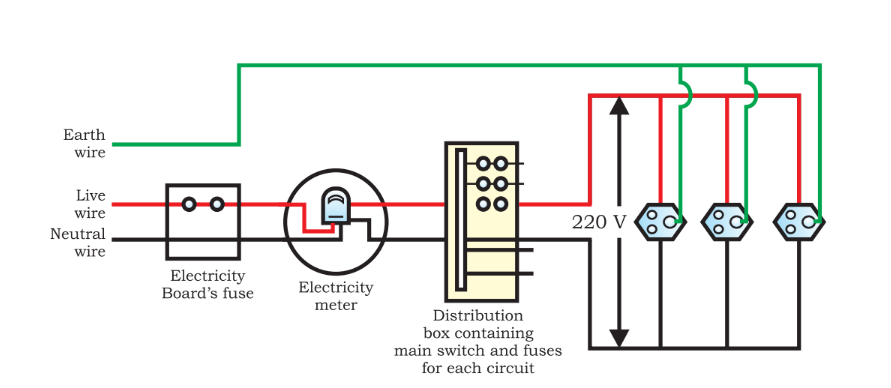
Fuse
A fuse serves as a protective device in electrical circuits during instances of overloading. Overloading occurs when the neutral and live wires come into contact due to insulation damage or a fault in the line.
During overloading, the current in the circuit increases, resulting in a short circuit that can be hazardous. The fuse device employs Joule’s heating (resistive or ohmic heating caused by the flow of current) to melt and break the circuit, thereby interrupting the current flow in the circuit.
Domestic Electric Circuits: Notes on Magnetic Effect of Electric Current Class 10
The live wire is coated with red insulation and carries a voltage of 220 V. The earth wire, covered with green insulation, maintains a voltage of 0 V, aligning with the Earth’s potential. The neutral wire, covered in black insulation, serves its purpose.
For domestic usage, our houses are supplied with alternating current (AC) electric power at 220 V with a frequency of 50 Hz.
Power Loss in Transmission
Power losses in transmission lines over long distances arise due to Joule’s heating. These losses are proportional to the square of the current (H ∝ I^2) and are caused by the line resistance (R).
Joule’s Law of Heating
Joule’s law provides a mathematical representation of how resistance in a circuit converts electric energy into heat energy. The first law of Joule describes the relationship between the heat produced by electric current flowing through a conductor, which can be expressed by the following formula:
Q = I^2 * R * T
Where Q represents the amount of heat generated, I is the electric current, R is the electric resistance in the circuit, and T denotes the time.
Read More
- Class 10 Notes for Science NCERT
- Metals and Non Metals Class 10 NCERT Science Chapter 3 Notes
- Chemical Reaction and Equation Notes Class 10 NCERT Sci. Ch.1
- Acids Bases and Salts Class 10 Notes of NCERT Science Ch. 2
- Life Process Notes Class 10 NCERT Science Chapter 5
- Control and Coordination Notes Class 10: NCERT Science Ch. 6
- Class 10th How Do Organisms Reproduce Notes: Science Ch. 7
- Class 10th Heredity and Evolution Notes: NCERT Science Ch. 8
- Class 10th Chapter 11 Science Notes for NCERT Students
- Notes of Our Environment Class 10: NCERT Science Chapter 13
Frequently Asked Questions on Notes on Magnetic Effect of Electric Current Class 10
Q 1. What is magnetic effect of electric current Class 10 concepts?
The magnetic effect of electric current is known as the electromagnetic effect. This implies that when a magnetic compass is brought close to an electrically charged conductor, the compass needle gets deflected due to the flow of electricity.
Q2. Who discovered the magnetic effect of electric current Class 10?
The discovery of the magnetic effect of current is credited to Hans Christian Oersted.
Q 3. What is the SI unit of magnetic flux?
The magnetic flux is measured in the SI unit called the Weber (Wb). When the flux density is one Weber per square meter (Wb/m^2), it is equivalent to one Tesla (T).
Q 4. What are two examples of magnetic effect of electricity?
Cranes utilize robust electromagnets for moving metallic objects. Electric bells employ electromagnets to generate sound. Additionally, induction motors harness the magnetic effect of current in their operation.
Q 5. How do magnetic effects relate to electromagnetic induction?
Electromagnetic induction is the process by which a changing magnetic field induces an electric current in a conductor. This phenomenon is the basis for many electrical devices and technologies, including generators and transformers.
Q 6. Can magnetic effects of electric currents be harmful?
While magnetic effects of electric currents are essential for many applications, strong magnetic fields can be harmful to certain electronic devices and even living organisms. It is crucial to exercise caution and use appropriate shielding when dealing with high-power magnets or magnetic fields.
Q 7. What is the significance of magnetic fields in transformers?
Transformers use magnetic fields to transfer electrical energy between two or more coils of wire. By inducing a magnetic field in one coil, it creates a varying magnetic flux that, in turn, induces a voltage in another coil, allowing for efficient electrical energy transfer.
Q 8. How do magnetic effects impact electric power transmission?
Magnetic effects play a crucial role in electric power transmission systems. They can cause power losses due to heat generation in transmission lines, requiring efficient designs to minimize energy wastage during long-distance electricity transmission.
Q 9. What is the application of magnetic effects of electric currents in class 10?
Magnetic effects of electric currents find applications in various devices and technologies, including electromagnets, electric motors, generators, transformers, and many other electrical appliances.
Q 10. How does an electric motor work?
An electric motor operates based on the principle of electromagnetic induction. When an electric current flows through a coil placed within a magnetic field, it experiences a force that causes the coil to rotate, leading to the movement of the motor’s shaft.